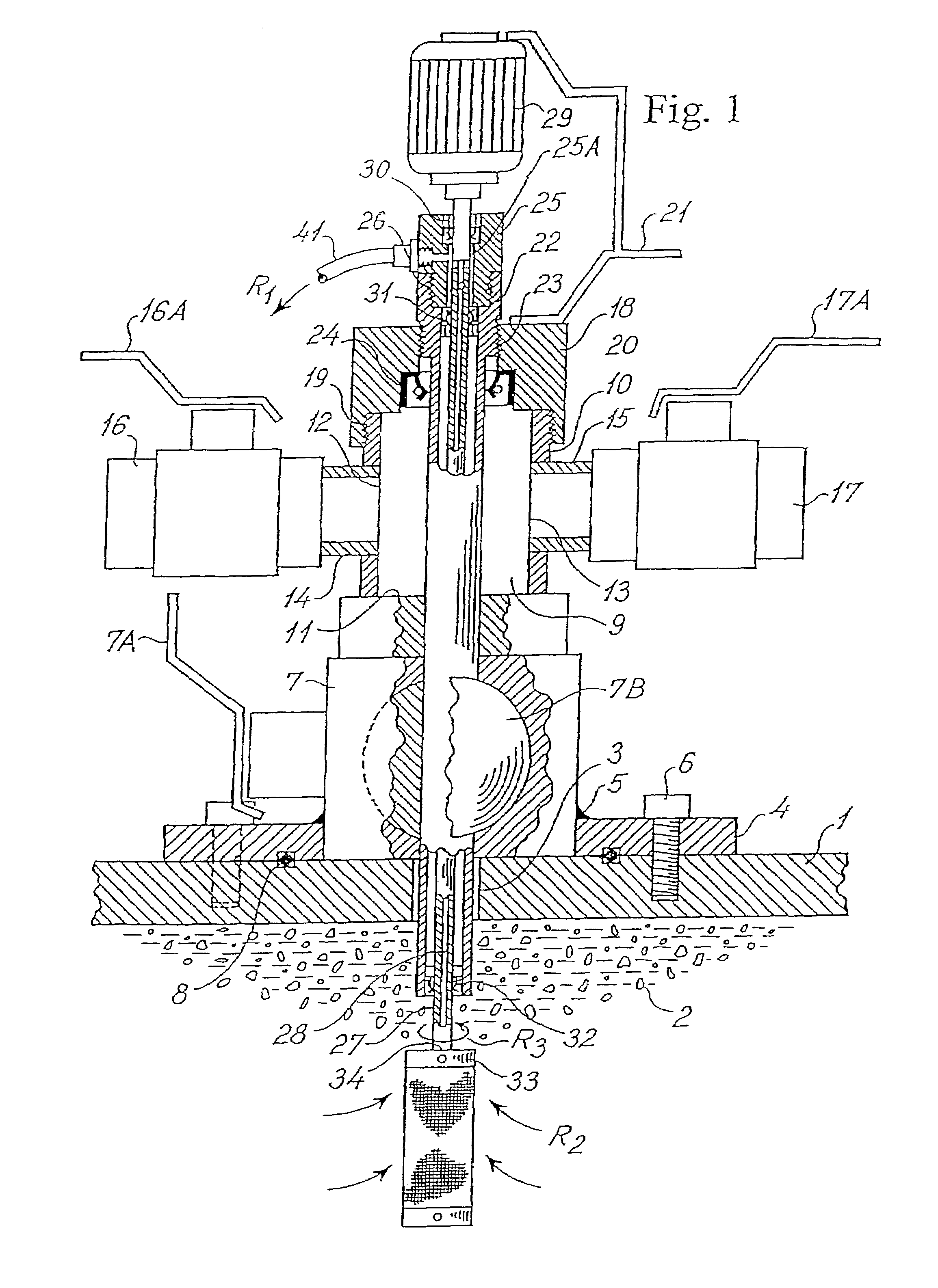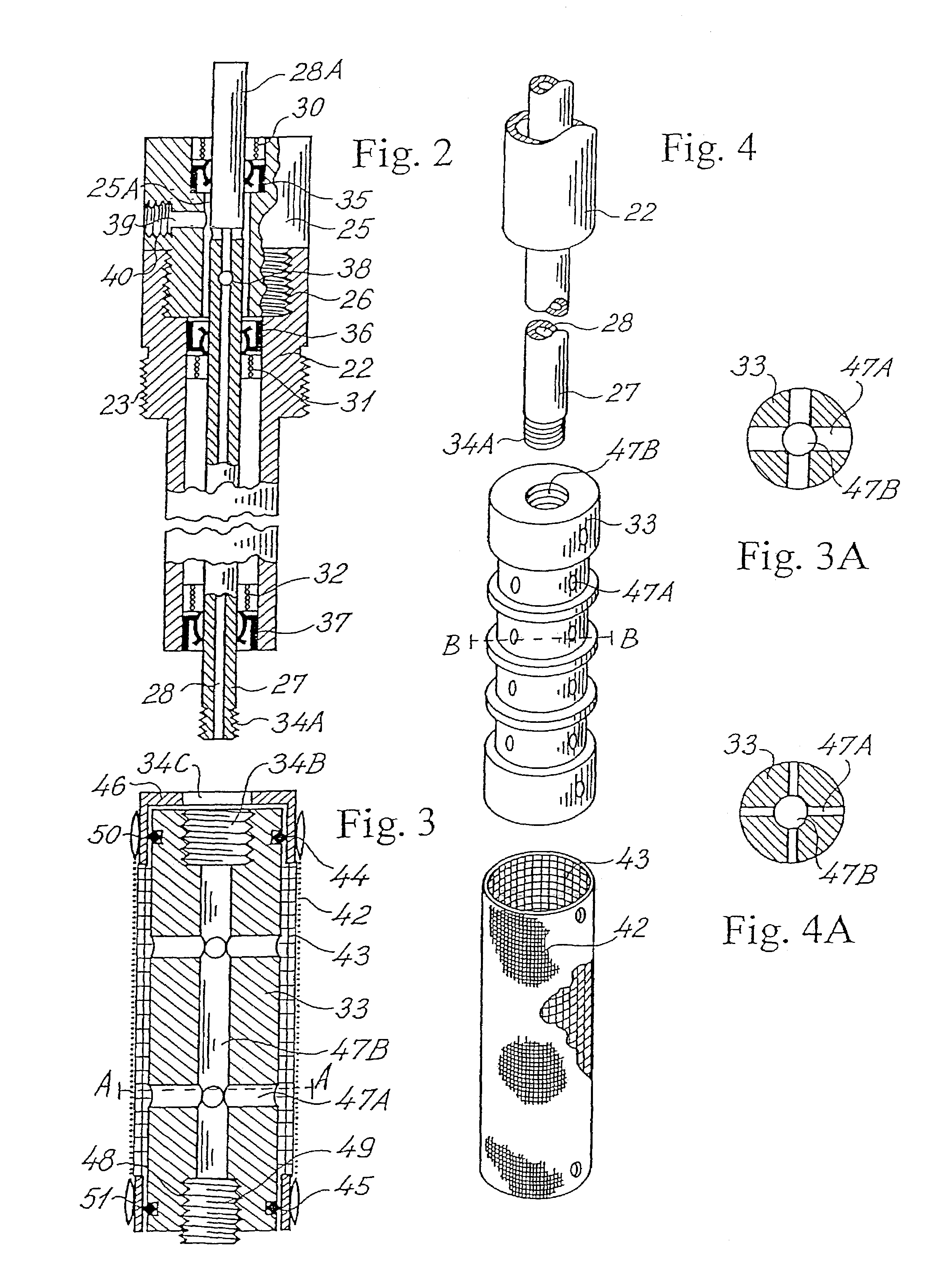Assembly for withdrawing and filtering partial volumes of process fluid
a technology of process fluid and assembly, which is applied in the direction of filtration separation, separation processes, instruments, etc., can solve the problems of inadequate filtering of process fluid from biological processes, e.g. anaerobic digestion, and a series of problems, and achieves the effect of reducing the number of parts
- Summary
- Abstract
- Description
- Claims
- Application Information
AI Technical Summary
Benefits of technology
Problems solved by technology
Method used
Image
Examples
example 1
Filtration Test
[0111]A test was conducted on an assembly constructed according to the present invention having the dimensions provided in the table below and operated under the conditions provided in the table below.
Description of Assembly Used
[0112]
Filter surface area31cm2Filtering screen diameter2cmFiltering screen length5cmRPM1000–2000Connecting shaft8mm ext. dia.,4mm mt. dia.Casing fittings22mm ext. dia.Casing length30cm,30mm ext. dia.Fluid lock mechanism tube / Vents1½–2inchFluid lock mechanism tube length12cmFilter body dead volume10ml
[0113]The filtering screen, filter housing and connecting shaft were rotated using a variable motor with a digital speed display (Heidolph RZR 2051). The assembly was fitted to a 4.5 l fermenter with temperature control. Cow manure having a composition as listed in the table below and digested manure having a composition as listed in the table below were used as process fluids.
Composition Description of Manure Used
[0114]
ReactorComponentCow manureef...
example 2
Consistency Between Filtered and Non Filtered Samples
[0118]To evaluate the efficiency of the assembly according to the present invention for continuously withdrawing and filtering process fluid, tests were conducted with variable contents of volatile fatty acids in the fermenter. The content of volatile fatty acids measured in samples taken directly from the reactor was compared with the content measured in samples withdrawn through the assembly of the present invention having the dimensions provided in the table of example 1 and using a filtering screen with a pore size of 60 μm. Samples were acidified using phosphoric acid and centrifuged. The supernatant was then filtered using a syringe filter (1.2 μm) and analyzed on a GC calibrated for measurements of volatile fatty acids. The correlation between the samples taken directly from the reactor and the samples withdrawn through the assembly is shown in FIG. 7.
[0119]The volatile fatty acid (VFA) measurements showed excellent correla...
PUM
| Property | Measurement | Unit |
|---|---|---|
| Speed | aaaaa | aaaaa |
| Velocity | aaaaa | aaaaa |
| Length | aaaaa | aaaaa |
Abstract
Description
Claims
Application Information
 Login to View More
Login to View More - R&D
- Intellectual Property
- Life Sciences
- Materials
- Tech Scout
- Unparalleled Data Quality
- Higher Quality Content
- 60% Fewer Hallucinations
Browse by: Latest US Patents, China's latest patents, Technical Efficacy Thesaurus, Application Domain, Technology Topic, Popular Technical Reports.
© 2025 PatSnap. All rights reserved.Legal|Privacy policy|Modern Slavery Act Transparency Statement|Sitemap|About US| Contact US: help@patsnap.com



